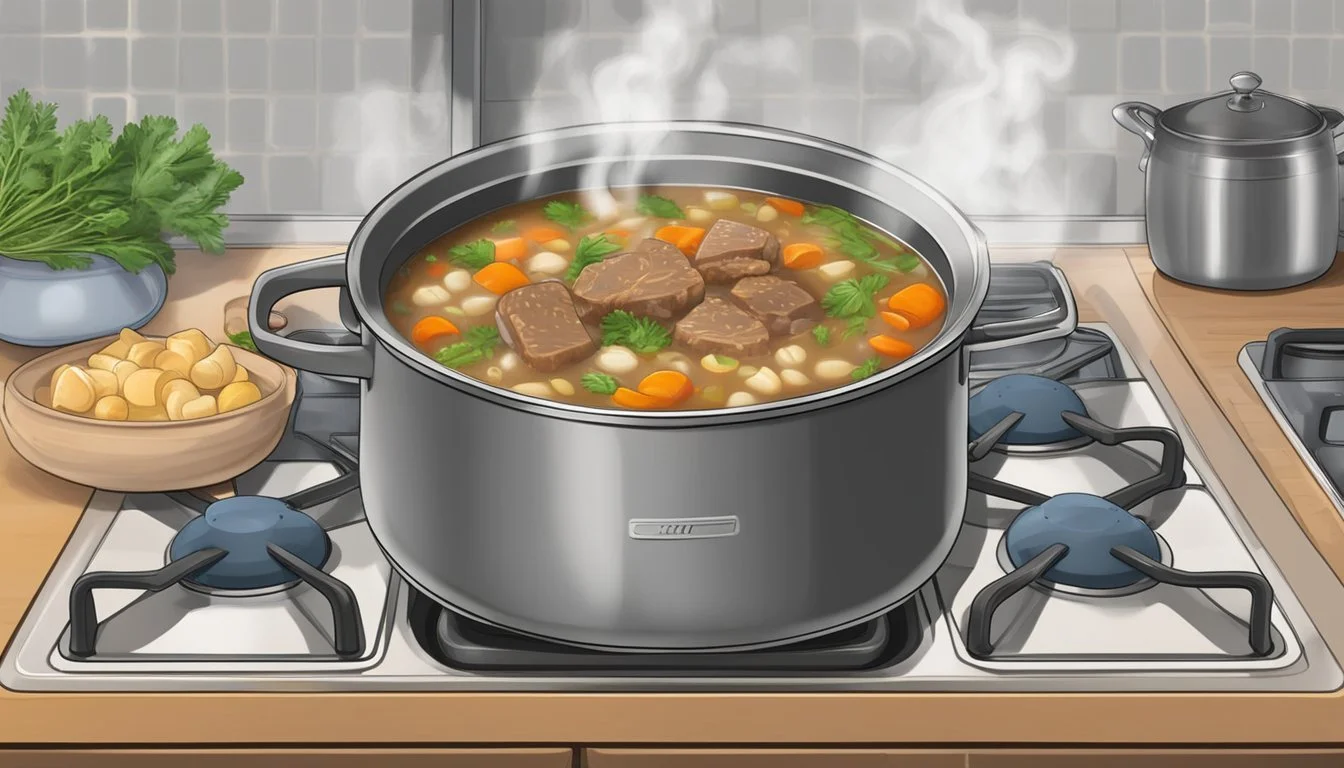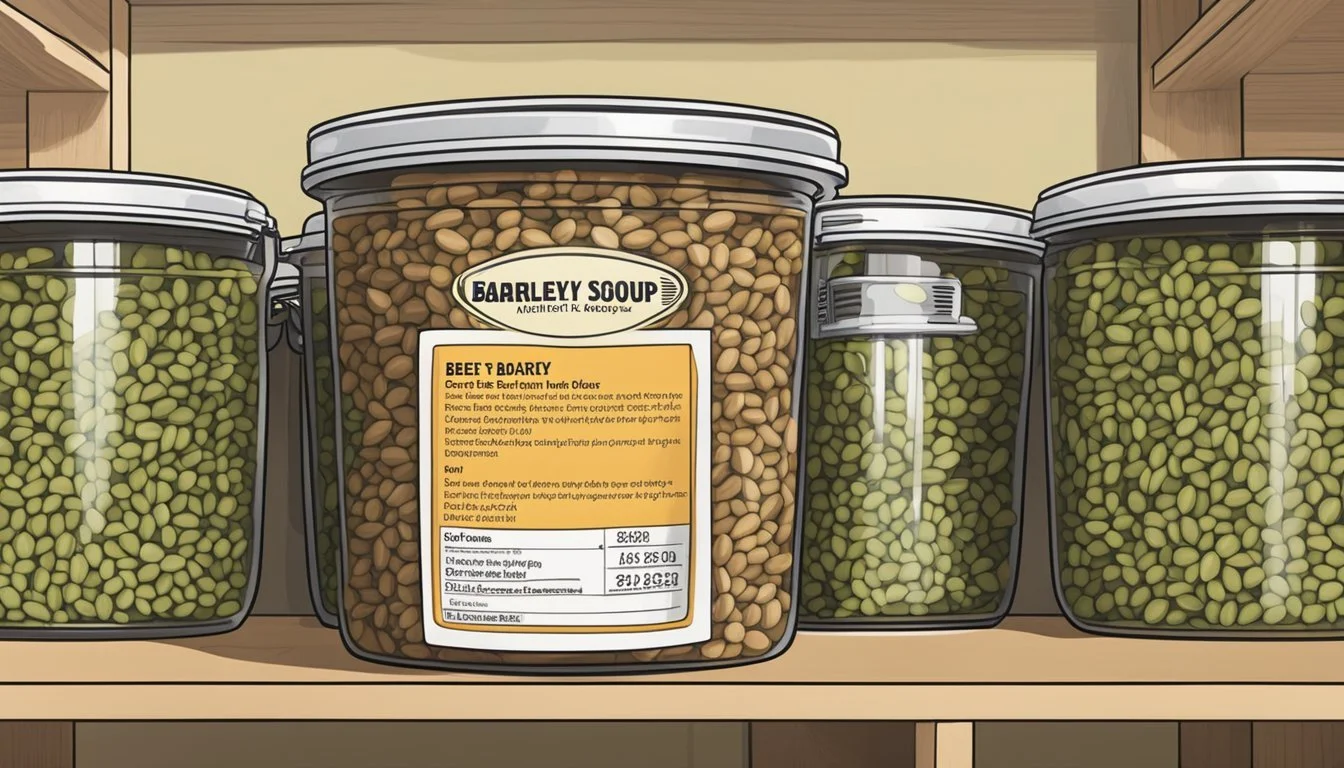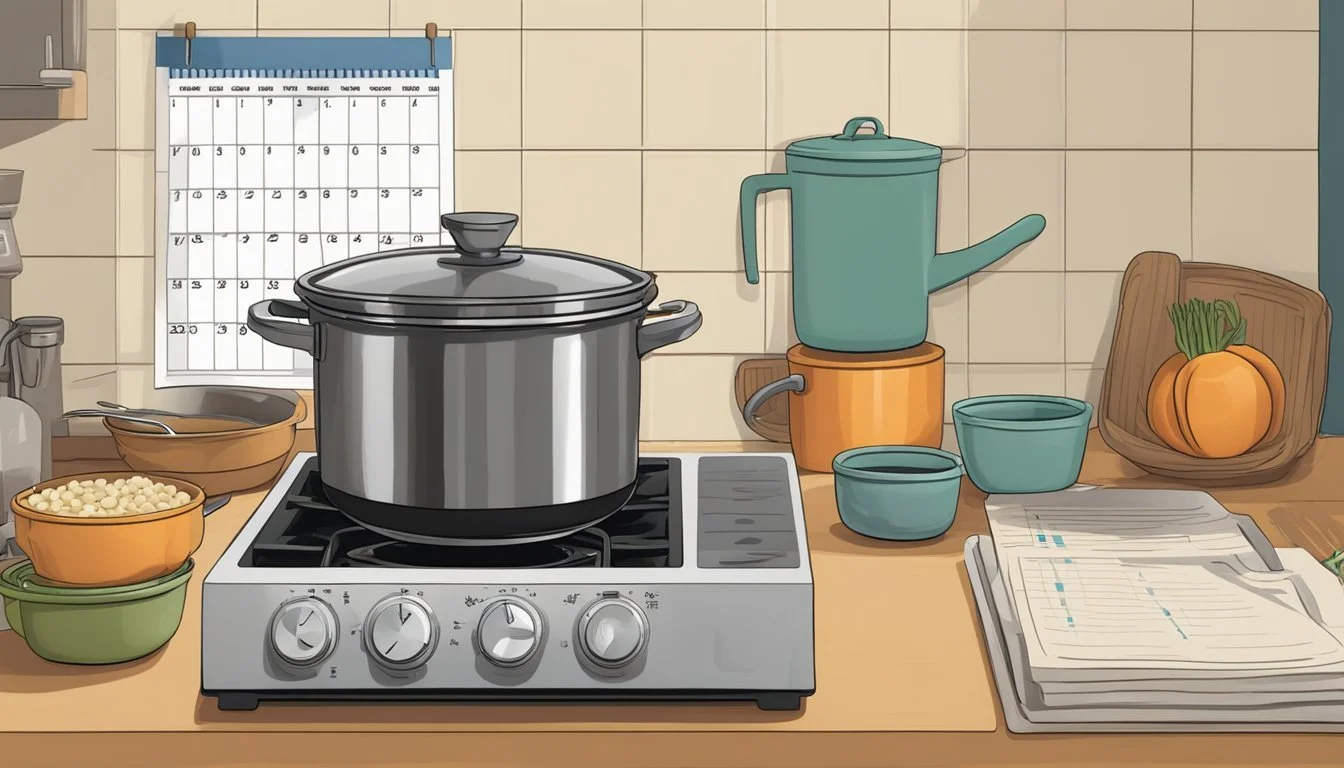How Long Does Beef Barley Soup Last?
Shelf Life and Storage Tips
Beef barley soup is a comforting and hearty dish appreciated by many for its rich flavors and nutritious ingredients. Stored properly in the refrigerator, beef barley soup can last for about 3 to 4 days, ensuring it remains safe to eat. For those who want to preserve it longer, freezing is a great option. In the freezer, this savory soup can last up to 2 to 3 months without losing its taste and quality.
To maximize the shelf life, it’s crucial to store the soup in airtight containers. This helps maintain its freshness and prevents any contamination. When reheating, ensure the soup is heated thoroughly to an internal temperature of 165°F to guarantee it’s safe to consume.
Planning out your meals with beef barley soup is easy once you know how long it keeps. Understanding proper storage techniques helps reduce waste and allows you to enjoy this delicious soup whenever you desire.
Essential Ingredients
When preparing beef barley soup, it's crucial to use a variety of core ingredients that add depth and flavor. These elements include the primary components, a selection of herbs and spices, and differing broth varieties.
Primary Components
The foundation of beef barley soup includes hearty beef, commonly chuck roast for its rich flavor and tenderness when simmered.
Barley, typically pearl barley, adds a chewy texture and essential nutrients. Root vegetables such as carrots, onions, and celery deliver sweetness and aroma.
Further variety may include potatoes, mushrooms, or kale for additional texture and nutrients. Essential aromatics like garlic heighten the overall complexity of the dish.
Herbs and Spices
Herbs and spices define the soup's character. Kosher salt and ground black pepper are fundamental for seasoning.
Thyme and bay leaf provide an earthy, aromatic quality. Parsley is often added for a fresh, vibrant finish.
A hint of oregano can be included for a subtle, herbal note.
For added depth, Worcestershire sauce imparts a tangy, savory element that complements the beef perfectly.
Broth Varieties
The broth acts as the soup's base and significantly influences its flavor. Beef broth is the most common choice, offering a rich, meaty flavor.
Low-sodium versions can be preferable for those monitoring their sodium intake.
For a distinctive taste, some recipes introduce tomato paste or diced tomatoes, enriching the broth with a sweet and slightly tart profile.
A balanced blend ensures the other ingredients shine while maintaining a robust and hearty flavor.
Health and Nutrition
Beef barley soup offers a balance of macronutrients and is rich in dietary fiber and protein. It provides a nutritious option while keeping sodium and cholesterol at moderate levels.
Macronutrient Profile
Beef barley soup is a balanced dish containing proteins, carbohydrates, and fats. A typical serving may have around 200-250 calories. Carbohydrates primarily come from the barley and vegetables, providing essential energy. Proteins are offered by the beef, which is vital for muscle maintenance and repair. Fats, both saturated and unsaturated, are present, with unsaturated being more beneficial for heart health. Trans fats are typically minimal if lean cuts of beef are used.
Dietary Fiber and Protein
Barley is a significant source of dietary fiber, which aids in digestion and helps maintain steady blood sugar levels. Each serving contains approximately 5-7 grams of fiber. Protein content ranges around 20 grams per serving, contributing to satiety and muscle health. The combination of soluble and insoluble fibers in barley supports a healthy gut. Alongside this, the amino acids from the beef support overall bodily functions and recovery.
Sodium and Cholesterol
The soup contains moderate levels of sodium and cholesterol. Sodium content can be adjusted by using low-sodium beef broth and limiting added salts, typically providing around 500-800 milligrams per serving. Cholesterol from beef is another consideration, generally sitting at 30-50 milligrams per serving, mindful of contributing to heart health factors. Opting for lean cuts of beef mitigates excessive cholesterol intake, aligning with cardiovascular health guidelines.
Cooking Instructions
Successfully making beef barley soup involves careful preparation and specific cooking techniques to ensure a rich, flavorful meal. This section will guide you through the essential steps, from preparing ingredients to the final simmer.
Preparation Steps
Start by gathering all necessary ingredients, which typically include beef (such as steak or stew meat), pearled barley, and a range of vegetables like carrots, celery, and onions. Begin by searing the beef to lock in the flavors. Heat some oil or a combination of butter and oil in a large pot over medium-high heat, and brown the meat thoroughly on all sides.
Next, chop the mirepoix (a mix of onions, carrots, and celery) and sauté them until softened. This step develops the base flavor for the soup. Add minced garlic during the last few minutes to avoid burning it. Deglaze the pot with a bit of beef broth to lift any caramelized bits stuck to the bottom, contributing to a deeper taste.
Cooking Techniques
Once the vegetables are sautéed, and the pot is deglazed, add the remaining broth, tomatoes, and seasonings such as thyme, bay leaf, and Worcestershire sauce. Bring the mixture to a gentle simmer over medium-high heat, then reduce the heat to maintain a low simmer. Cover the pot and simmer for about 60 minutes to 1.5 hours, allowing flavors to meld and the beef to become tender.
After the initial cooking time, add the pearled barley and continue to cook for another 40-50 minutes until the barley is tender and the soup has slightly thickened. Frequent stirring helps achieve even cooking and prevents sticking. Adjust seasoning with additional salt and pepper to taste.
For those using a slow cooker or crockpot, follow the preliminary steps of browning the meat and sautéing the vegetables on the stovetop. Transfer everything to the slow cooker and cook on low for 6-8 hours or on high for 4-5 hours. Pearled barley can be added halfway through the cooking process for best results.
These steps will yield a hearty and flavorful beef barley soup, perfect for any occasion.
Storage Tips
Proper storage ensures that beef barley soup remains delicious and safe for consumption, whether storing in the refrigerator or freezing for longer periods.
Refrigeration
When storing beef barley soup in the refrigerator, ensure it is cooled to room temperature first. Transfer the soup to airtight containers to keep it fresh and prevent contamination. Refrigerate the soup within two hours of cooking to extend its shelf life.
Beef barley soup can typically last 3 to 4 days in the refrigerator. Labeling containers with the date helps track the storage time. For those tracking dietary needs, consider opting for low sodium broth when reheating leftovers to maintain health benefits. Reheating should be done thoroughly until the soup reaches an internal temperature of 165°F (74°C).
Freezing
Freezing beef barley soup can extend its shelf life significantly. Again, cool the soup to room temperature before transferring it to freezer-safe containers or heavy-duty freezer bags. Leave some space at the top of the containers as the soup expands when frozen.
Frozen beef barley soup can last up to 3 months without significant loss of quality. To defrost, move the soup from the freezer to the refrigerator the night before to thaw slowly. When ready to reheat, either use a microwave or stove, ensuring the soup reaches 165°F (74°C). This step ensures it is safe to eat and tastes fresh.
Reheating Guidelines
Reheating beef barley soup can be done efficiently using several methods, each ensuring that the soup regains its delicious taste and texture. Here are the best methods: stovetop, microwave, and oven.
Stovetop Method
Using the stovetop is a classic and reliable way to reheat beef barley soup. Begin by placing the soup in a saucepan. Heat it over medium heat, stirring occasionally to prevent sticking and ensure even heating.
Monitoring the temperature is crucial. Heat the soup until it reaches at least 165°F (74°C). Stirring helps distribute the heat evenly and prevents the barley from becoming mushy.
Keeping the lid slightly ajar can help retain moisture. This method maintains the integrity of the barley and meat, ensuring a rich flavor.
Microwave Method
Reheating in the microwave offers convenience. Place the soup in a microwave-safe container and cover it loosely to avoid splattering. Heat on high for 2-3 minutes, stopping to stir halfway through.
Ensure the soup reaches 165°F (74°C) to kill any potential bacteria. Stirring halfway ensures even heating and prevents cold spots.
Allow the soup to rest for a minute or two after microwaving. This resting period helps distribute the heat uniformly, maintaining the soup’s texture and flavor.
Oven Method
For reheating larger quantities, the oven method is effective. Preheat the oven to 350°F (175°C). Transfer the soup to an oven-safe dish and cover it with a lid or foil.
Heat the soup for about 25-30 minutes. Periodically check to ensure the temperature is consistent, and stir if necessary.
Maintaining a low to medium heat prevents the barley from becoming overly soft. This method also helps preserve the soup’s rich flavors and aromas.
Serving Suggestions
Beef barley soup is a comforting and hearty meal that pairs well with a variety of sides and garnishes, adding an extra layer of flavor and texture to your dining experience.
Meal Ideas
Beef barley soup makes a perfect dinner, especially during the winter months. Serve it with a crusty bread or garlic toast to soak up the flavorful broth. For added texture, consider pairing the soup with a side salad featuring fresh greens and a light vinaigrette.
If you're planning a lunch, complementing the soup with a grilled cheese sandwich can make a delightful combination. Roasted veggies or a veggie platter can add a healthy balance to the meal.
During hearty meals, consider having mashed potatoes as a side, which pairs wonderfully with the tender beef and chewy barley. Homemade biscuits also work well, adding a bit of comfort food to the table.
Garnish and Enhancements
Garnishes can elevate a simple bowl of beef barley soup to a gourmet experience. Fresh parsley, finely chopped, can add a burst of color and freshness to each serving. Grated Parmesan cheese or a dollop of sour cream provides a creamy contrast to the soup’s hearty texture.
For a spicy kick, sprinkle red pepper flakes or drizzle some hot sauce over the top. A squeeze of lemon juice can brighten the flavors, while a tablespoon of olive oil adds richness.
Additionally, include some croutons for an added crunch, or stir in roasted wild mushrooms to enhance the earthy flavors of the soup. The options are diverse, making every bowl a unique experience.
Customization Ideas
There are various ways to customize beef barley soup, from altering the ingredients to creating vegetarian versions. These changes allow for diverse flavors and dietary accommodations.
Ingredient Variations
Enhancing beef barley soup can be done by switching up certain ingredients. Use beef chuck roast or stew meat for a deeper flavor. Replace beef broth with beef stock for a heartier base. Add diced tomatoes and a dash of Worcestershire sauce to boost the soup's umami profile.
Adding pearl barley and dried thyme can provide added texture and aroma. Onions, carrots, and celery form a fundamental mirepoix base, but adding mushrooms or peas can enhance the richness and nutritional value.
Tender beef cuts, when combined with beef chuck roast, can yield a consistent texture throughout the soup. Experimenting with these variations ensures a unique and flavorful dish every time.
Vegetarian Alternatives
For a vegetarian twist, replace the beef with hearty vegetables like potatoes, butternut squash, or zucchini. Use vegetable broth instead of beef broth to maintain the soup's depth of flavor.
Pearl barley remains a staple, providing a chewy texture that pairs well with a range of veggies. Incorporate diced tomatoes and herbs like dried thyme and rosemary for added flavor complexity.
Lentils or chickpeas can serve as a protein source, giving the soup a similar heartiness to traditional beef stew. This vegetarian version remains filling and satisfying while catering to those avoiding meat.









